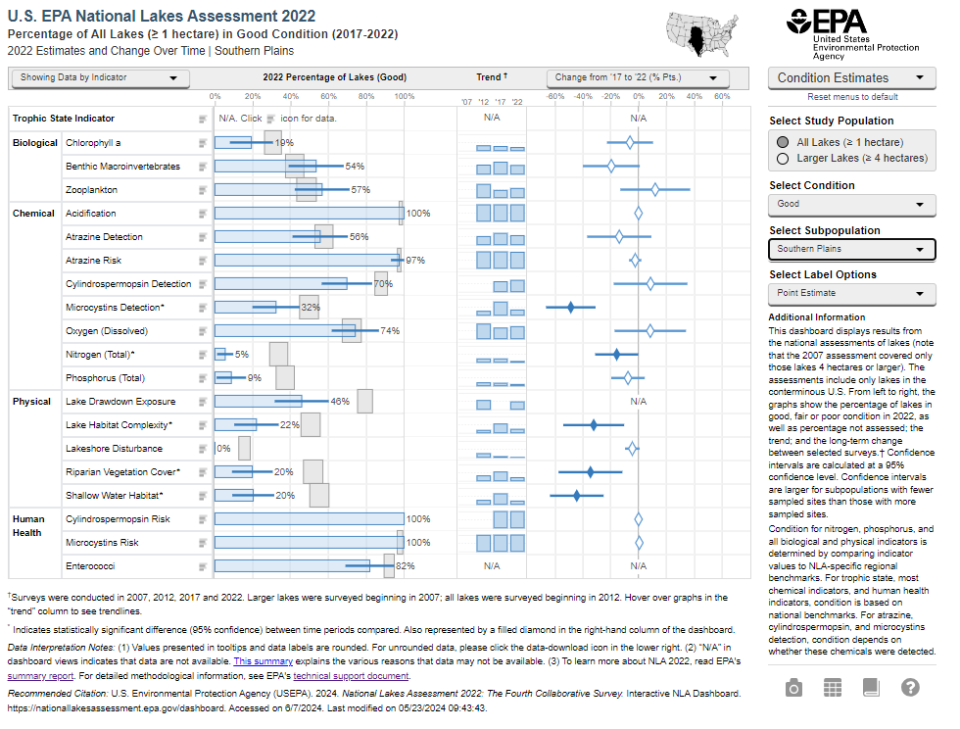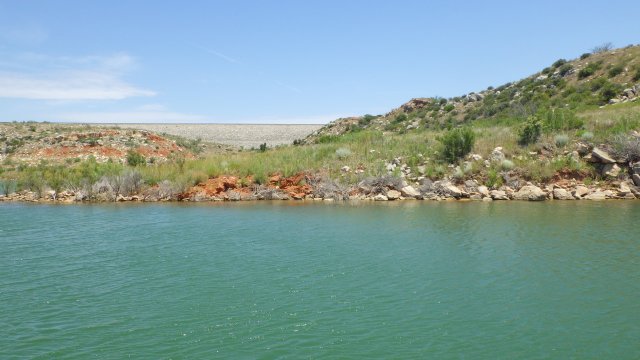Southern Plains Ecoregion - National Lakes Assessment Results
Key Results
An estimated 29,656 lakes in the Southern Plains ecoregion are represented in the National Lakes Assessment (NLA). Of these lakes, 1% are natural and 99% are man-made.
The NLA uses trophic state as an important indicator of lake condition and assesses the extent of biological condition and key stressors in the nation’s lakes.
- In the Southern Plains, 52% of lakes are rated as hypereutrophic while 35% are eutrophic, 13% are mesotrophic and 0% are oligotrophic.
- The most widespread stressors assessed are nitrogen and phosphorus both with 83% of lakes in poor condition.
- Cyanobacteria are one-celled photosynthetic organisms that normally occur at low levels. Under eutrophic conditions, cyanobacteria can multiply. Not all cyanobacterial blooms are toxic, but some may release toxins, such as microcystins. For information about risks at specific locations, recreational water users should check with state, tribal or local governments.
- Based on microcystins, detections occurred in 68% of lakes however, no lakes were above the recreational benchmark.
Lake in Texas sampled for NLA 2017, Texas Crew
- Based on microcystins, detections occurred in 68% of lakes however, no lakes were above the recreational benchmark.
Change from 2017*
- For the Southern Plains, the NLA reports that the percent of lakes with good shallow water habitat decreased by 44 percentage points between 2017 and 2022.
- The percent of lakes with microcystin detections increased by 49 percentage points.
To access more ecoregional specific information, please visit the interactive NLA Dashboard.
* The change analysis is based on information from two points in time – 2017 and 2022.


